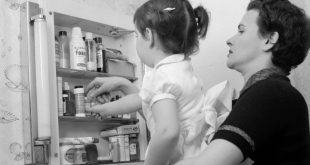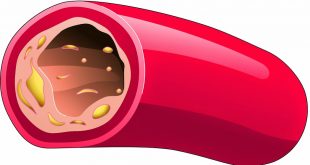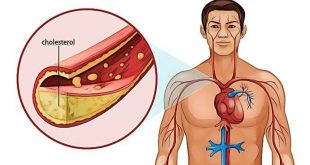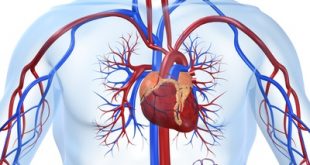I’m Old, I have high blood pressure, is it normal?
Introduction
- Physiological changes occur in blood vessels as a person grows older.
- Receptors called baroreceptors that help to keep the blood pressure in a fairly constant range when a person changes positions or activities become less sensitive with aging.
- The blood vessel walls also thicken and stiffen with age. This will lead to moderate increase in systolic blood pressure. However, the diastolic blood pressure may decrease due to the inability of the blood vessel walls to relax after constriction.
- It was once believed that high blood pressure in elderly is normal and treatment is not needed. This is proven not true as increase cardiovascular risk is still shown to be associated with high blood pressure even in elderly.
- Hypertension in elderly requires treatment.
- Accuracy of the diagnosis of hypertension is crucial. This is to avoid wrongly diagnosing someone normal with hypertension, or to diagnose someone NOT having diagnosis when he/she really has it.
Accuracy Of Diagnosis
The definition of hypertension in elderly is the same as for young adult.
| Systolic blood pressure | Diastolic blood pressure | |
| Hypertension | More or equal to 140mmhg | More or equal to 90mmhg |
However, blood pressure is not constant and fluctuates according to physical and emotional demands. Therefore, you will need at least 2 repeated blood pressure measurements before coming to conclusion that you have hypertension. Occasionally, single measurement will be sufficient for diagnosis if you are also having features of organ damage due to hypertension.
Common Inaccuracy Of Hypertension Diagnosis
Scenario 1
Mrs AZ has bought an electronic machine to perform blood pressure measurement at the comfort of his home. She has to take care of 2 young grandchildren and it is not easy to get a quiet moment at home at any time of the day. She found her BP to be 180/85 mmHg on 2 occasion and decided that she has hypertension and started purchasing hypertensive medication from a local pharmacy. She decided to self medicate as going to a clinic for proper check up will take too much of her time.
- The machine and method of blood pressure measurements: Electronic machines are more sensitive and may give you higher reading if the recording is not done properly. It is better to measure the blood pressure few times and take the average or to have the measurement rechecked using the manual blood pressure (sphygmomanometer). It is also a good practice to check blood pressure in a quiet environment.
Scenario 2
Mr BY was just diagnosed to have stroke 2 days ago. He smokes 20 cigarettes a day, but was not found to have hypertension and diabetes from his regular 6 monthly check up before the stroke episode. 2 days after the stroke, his blood pressure has been constantly showing reading of 150/85mmHg. He was diagnose to have hypertension and started on antihypertensive.
- State of health: Blood pressure can be high straight after an episode of a stroke. This is a normal body response to help to supply blood to a swollen brain after stroke. Generally, the blood pressure level will drop to the normal blood pressure baseline in 1 to 2 weeks time. If you do not have hypertension before the stroke episode(you will only know this if you have regular health check-up before the stroke), it is better to have the blood pressure repeated after 1 to 2 weeks before the diagnosis of hypertension is made. However, if your blood pressure is too high during the acute episode of stroke, you may be given a short course of antihypertensive medications. This is also true if someone had an acute episode of heart failure.
Scenario 3
Mr CX has been having diarrhea and loss of appetite for the past 3 days. At clinic, he was told that the blood pressure was 130/85mmHg. He was relieved that he was not suffering from hypertension.
- State of health: Blood pressure may be either higher or lower when you are not feeling well. It may not accurately reflect your true blood pressure. For example, blood pressure may be low if you are dehydrated from acute illness.
Scenario 4
Mdm DW has gout arthritis for the past 5 years. The acute gout episodes are infrequent, about 1 time per year. Currently, she is having her usual acute attack. Her left foot is painful and she is taking painkillers for the pain. Her blood pressure measurement recorded 160/90mmHg. She was diagnose to have hypertension and told to start on treatment.
- Concurrent medications: Some painkillers cause salt retention. It may result in higher blood pressure if the BP was recorded while you are taking these painkillers. In addition, pain may also increase your blood pressure. Therefore, it is not advisable to make a diagnosis of hypertension based on blood pressure measurement done when you are having acute pain or while you are taking medications that may affect blood pressure.
Scenario 5
Mr EU is fit 85 years old. His blood pressure is 160/70mmHg on repeated measurement. He was reassured that he does not require treatment as the bottom blood pressure reading (diastolic) is ‘perfect’.
- Hypertension diagnosis is made with any of the blood pressure reading (either systolic OR diastolic) above the normal level (refer above for the definition of hypertension). Diastolic reading may not be high in elderly because of the physiological changes in the blood vessel walls that makes it stiff. Scenario 5 illustrates a condition known as isolated systolic hypertension. Isolated systolic hypertension is seen more in older people and it also increases risk of cardiovascular diseases. Therefore, isolated systolic hypertension requires treatment.
Scenario 6
Mr FT has been practicing home blood pressure monitoring for many years. He noticed an interesting finding. His blood pressure on lying is constantly high, averaging about 180/90mmHg. However, if he recorded his blood pressure in sitting posture, it gave him a nice blood pressure reading of 130/80mmHg in average. Does he have hypertension?
- This is a condition known as supine hypertension, orthostatic hypotension3. It occurs when the body is not able to generate a constant blood pressure when the body changes its posture. The result is a high blood pressure on lying down and low blood pressure on sitting or standing up. This is due to the failure of the nerve system in regulating the muscle tone supporting the blood vessel walls. Conditions that may lead to this include long standing diabetes mellitus or neurodegenerative diseases. Supine hypertension has been shown to cause problem if left unattended. Therefore, treatment is still warranted. Get advice from specialist who is familiar with this condition for proper management (eg. Family physician, General physician, Neurologist, Endocrinologist or Geriatrician).
Scenario 7
Mrs GS has been having regular medical check-ups with her family doctor. Her blood pressure in the clinic has always been high, average of 160/90mmHg. When she repeats her blood pressure at home using an electronic device, her average blood pressure was 135/85mmHg. She is worried that she has hypertension.
- The environment. Some people response with a higher blood pressure when the BP recording is done in the clinic. It is also known as ‘white coat syndrome’. For this group of people, a more accurate blood pressure measurement should be done at home. Sometimes, the doctor may also request for a 24 hour blood pressure measurement.
Conclusion
- Diagnosis of hypertension in elderly is no different from the young.
- Hypertension in elderly requires treatment with the aim to reduce cardiovascular risk.
- The accuracy of hypertension diagnosis relies on the accuracy of how and when the blood pressure is recorded.
References
- Kaplan NM. Systemic hypertension: therapy. In: Libby P, Bonow RO, Mann DL, Zipes DP. Braunwald’s Heart Disease: A Textbook of Cardiovascular Medicine. 8th ed. Philadelphia, Pa: Saunders Elsevier; 2007:chap 41.
- Victor RG, Kaplan NM. Systemic hypertension: mechanisms and diagnosis. In: Libby P, Bonow RO, Mann DL, Zipes DP. Braunwald’s Heart Disease: A Textbook of Cardiovascular Medicine. 8th ed. Philadelphia, Pa: Saunders Elsevier; 2007:chap 40.
- Jordan J, Biaggioni I. Diagnosis and treatment of supine hypertension in autonomic failure patients with orthostatic hypotension, J Clin Hypertens (Greenwish). 2002; 4(2): 139-145.
| Last Reviewed | : | 2 March 2016 |
| Writer | : | Dr. Cheah Wee Kooi |
| Translator | : | Dr. Cheah Wee Kooi |
| Accreditor | : | Dr. Ainol Shareha Binti Sahar |
 PENDIDIKAN PESAKIT Kementerian Kesihatan Malaysia
PENDIDIKAN PESAKIT Kementerian Kesihatan Malaysia



